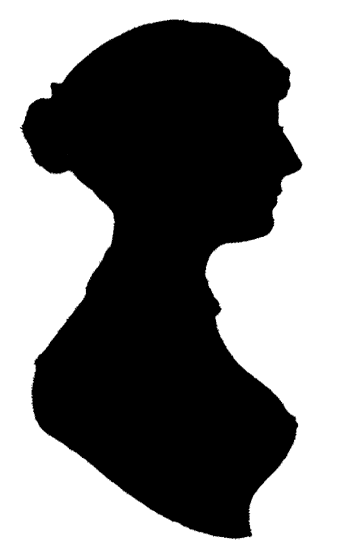The Art Of Silhouettes
During the Georgian period, almost all activities that were to be completed in the evening required the use of candles, and especially in the afternoons during the darker winter months. It was not until the 1930s that the electrification of homes was underway in the UK, and candles facilitated the writing of letters and reading of books after the sun had well and truly set.
Whilst candles were the primary form of artificial lighting available, they also provided a source of evening entertainment, for a candle brought close to a persons profile would cast a shadow in the shape of their physiognomy. This was how the practice of cutting silhouettes began, providing a simple and inexpensive way of making portraits. The candle would be brought close to the subjects face, and thus project a shadow onto a piece of paper attached to the wall, so that the shadow might then be drawn around.

Because almost anybody could create one, the making of silhouettes became a popular entertainment activity in the mid 18th and early 19th century. To our knowledge, Jane does not mention the making of silhouettes in any of her novels, but we do know that silhouettes depicting her mother and sister were made because their existence has been widely documented. It is thought that a silhouette held by the National Portrait Gallery, found in an early manuscript copy of Mansfield Park, is of Jane.

Silhouette of Jane's sister, Cassandra Austen.

L'aimable Jane, circa 1800-1815.
The term "silhouette" itself is derived from the name of Etienne de Silhouette (1709-1767), a finance minister to Louis XV. Etienne de Silhouette, though not the inventor of these portraits, became synonymous with the art form because he was particularly adept at making them. Making silhouettes was in fact a favourite pastime at the court of George III, who loved to throw silhouette parties. In 1775, Mrs. Samuel Harrington invented a mechanical device called the pantograph that could be used to enlarge or scale down drawings. A silhouette was normally made life size and the invention of the pantograph meant they could be reduced to a smaller, much more convenient size.
How To Cut Your Own Silhouette
- Hang a large piece of white paper on the wall of a darkened room.
- Have a person sit directly in front of the paper, although without resting against the paper or the wall.
- Shine a strong lamp at the sitter to project a defined shadow on the paper. The closer the lamp, the smaller the projected shadow.
- Have the sitter turn sideways so that the shadow becomes a profile. Tell him or her to sit very still.
- Use a pencil to draw an outline of the sitter's head, neck and the top of his or her shoulders on the paper.
- Cut out your drawing, then trace it onto black card or paper. If you are struggling to see the tracing, you can alternatively attach your white template directly onto the black paper or card.
- Cut around the drawing once again, removing all background paper or any white that may be left over if you stuck down the original template.
- Attach your black silhouette to a light coloured piece of paper and frame. Step back and take a look at your masterpiece!
If you are feeling adventurous, you could cut your background into an ovular shape, channelling the aesthetics of the nineteenth century cameo.
Why not get your subject to hold a sprig of mistletoe (real or fake) to get your silhouettes a little festive. Just remember, your subject will need to turn their arms holding the mistletoe, as well as their head, to the side so that the shadow can be seen and traced.
For those of you who are fond of silhouettes like us, why not take a look at our Elizabeth Bennet or Mr Darcy Silhouette Print. Equally, you may like our new Jane Austen Christmas Jumper, featuring the silhouettes of Elizabeth Bennet and Mr Darcy under the mistletoe!
If you don't want to miss a beat when it comes to Jane Austen, make sure you are signed up to the Jane Austen newsletter for exclusive updates and discounts from our Online Gift Shop.



1 comment
I had a silhouette cutting done of myself a few years ago when I went to the Jane Austen festival. It was lovely and the gentleman who did it was very talented.
Anonymous
Leave a comment
This site is protected by hCaptcha and the hCaptcha Privacy Policy and Terms of Service apply.